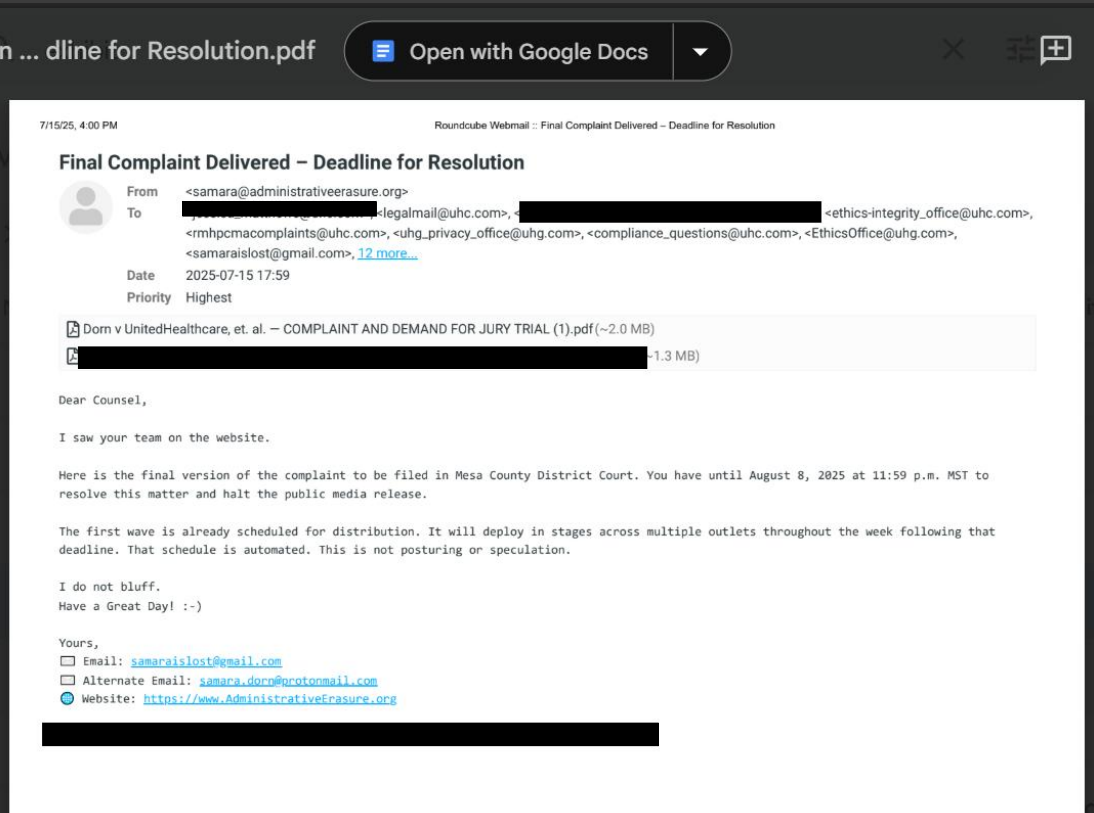📣 Delivered. Opened. Tracked. 🗓️ Sent: July 15, 2025 📎 Attachments:
Final Complaint – Dorn v. UnitedHealthcare
Unbranded “Surveillance by Proxy” Dossier 📍 Delivered to: UnitedHealthcare and Rocky Mountain Health Plans 🕵️ Tracked Page Views (First 5 Minutes): 22 🌍 Unique Visitors After Delivery: 42 🕒 Real-Time Access Confirmed From:
Grand Junction
Denver
San Jose, CA
Unknown (Internal Routing)
I told them:
“I saw your team on the website.”
Then I delivered everything:
The final 413-paragraph complaint
The metadata logs
The unbranded exposé
And a firm deadline: August 8, 2025 – 11:59 p.m. MST
Since then:
42 first-time users accessed this site
22 pages were viewed in under 5 minutes
Two users in San Jose—far from Colorado—dug through the material
Then the map… went quiet again
They know what’s coming. They’ve opened it. And now they’re watching silently, hoping the rest of the world doesn’t.
🧨 The Clock Is Ticking. They have 24 days to respond. The media rollout is already scheduled. And the story no longer belongs to them.
🔗 AdministrativeErasure.org
This record is timestamped.
This delivery is verifiable.
This silence is strategic.




